On-farm demonstrations program
 Agriculture Victoria coordinates a producer demonstration program aimed at building productivity and competitiveness in Victoria's sheep and beef industries.
Agriculture Victoria coordinates a producer demonstration program aimed at building productivity and competitiveness in Victoria's sheep and beef industries.
The program supports groups of livestock producers to conduct local, on-farm demonstrations, addressing specific issues relevant to their group and region.
The demonstrations are conducted with BestWool/BestLamb (BWBL), BetterBeef (BBN) or other producer groups.
These demonstrations are underway.
 This project demonstrates the benefits of Arrowleaf clover in pure and mixed swards, particularly for north of the divide. Arrowleaf clover is a late season legume option that can potentially increase weight gain in lambs prior to sale.
This project demonstrates the benefits of Arrowleaf clover in pure and mixed swards, particularly for north of the divide. Arrowleaf clover is a late season legume option that can potentially increase weight gain in lambs prior to sale.
Group name and coordinators
Perennial Pasture Systems (PPS)
Rob Shea yadin061@tpg.com.au
Agriculture Victoria demonstration coordinator
Jane Court jane.court@agriculture.vic.gov.au
This demonstration is co-funded by Agriculture Victoria and Meat & Livestock Australia.
 The demonstration will undertake pasture assessments at 6 host sites and develop plans (with a local agronomist) to address pasture limitations, demonstrating improvements to production over time.
The demonstration will undertake pasture assessments at 6 host sites and develop plans (with a local agronomist) to address pasture limitations, demonstrating improvements to production over time.
Group: Surf Coast and Bellarine BestWool/BestLamb Group
Group coordinator: Murray Johns johnslandlivestock@gmail.com
Agriculture Victoria demonstration coordinator: Hannah Manning hannah.manning@agriculture.vic.gov.au
This demonstration is co-funded by Agriculture Victoria and Meat & Livestock Australia.
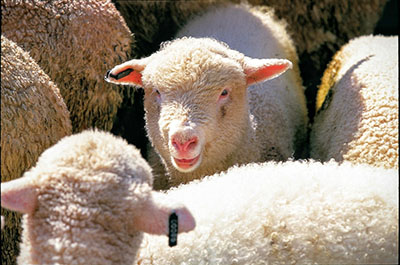 Sheep worm issues are exacerbated in East Gippsland by the even distribution of rainfall throughout the year. This project will address common worm species including Barber’s Pole and demonstrate application of best practice (including drench resistance testing) to manage the issue.
Sheep worm issues are exacerbated in East Gippsland by the even distribution of rainfall throughout the year. This project will address common worm species including Barber’s Pole and demonstrate application of best practice (including drench resistance testing) to manage the issue.
Resources and updates
Group name and coordinator
Bairnsdale BestWool/BestLamb and Swifts Creek and Buchan focus groups
Dr Ben Blomfield
Agriculture Victoria demonstration coordinator
Keren Walker
keren.walker@agriculture.vic.gov.au
This demonstration is co-funded by Agriculture Victoria and Meat & Livestock Australia.
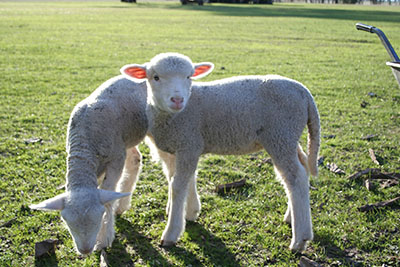 The project will demonstrate the benefits of vaccinating maiden ewes against Campylobacter. It will also help the group understand the prevalence and risk factors for Campylobacter within the Campaspe region.
The project will demonstrate the benefits of vaccinating maiden ewes against Campylobacter. It will also help the group understand the prevalence and risk factors for Campylobacter within the Campaspe region.
Resources and updates
Group name and coordinators
Rochy Vet Sheep Producer Group
Dr Frankie Collett frances.e.collett@gmail.com
Agriculture Victoria demonstration coordinator
Erica Schelfhorst erica.schelfhorst@agriculture.vic.gov.au
This demonstration is co-funded by Agriculture Victoria and Meat & Livestock Australia.
 This group has a great interest in using bioferts matched to soil tests and plant tissue tests. The project demonstrates pasture production, and the cost effectiveness of bioferts compared to traditional fertiliser applications, also applied according to soil test results.
This group has a great interest in using bioferts matched to soil tests and plant tissue tests. The project demonstrates pasture production, and the cost effectiveness of bioferts compared to traditional fertiliser applications, also applied according to soil test results.
Resources and updates
Group name and coordinator
Western Port Landcare Sustainable Farming Discussion Group
Peter Ronalds
Agriculture Victoria demonstration coordinator
Fiona Baker
fiona.baker@agriculture.vic.gov.au
This demonstration is co-funded by Agriculture Victoria and Meat & Livestock Australia.
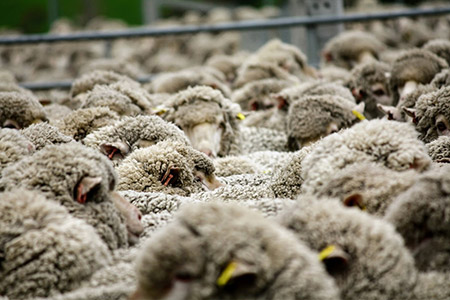 Benchmarking the genetic potential of 6 commercial Merino flocks and ensuring that genetic and phenotypic potential of weaners is aligned to a stated breeding objective, driving genetic progress. This demonstration is funded by MLA.
Benchmarking the genetic potential of 6 commercial Merino flocks and ensuring that genetic and phenotypic potential of weaners is aligned to a stated breeding objective, driving genetic progress. This demonstration is funded by MLA.
Resources and updates
Group name and coordinator
Agriculture Victoria demonstration coordinator
Nick Linden
nick.linden@agriculture.vic.gov.au
Lambs Alive
Jason Trompf
This demonstration is funded by Meat and Livestock Australia.
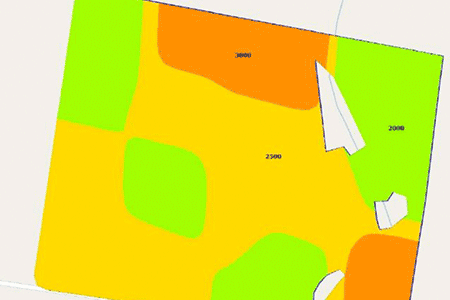 The aim of this producer demonstration site project is to evaluate precision soil testing and variable rate fertiliser applications (VRA) in Central Victoria. The project measures production and economic benefits to assess the value of precision agriculture for grazing properties.
The aim of this producer demonstration site project is to evaluate precision soil testing and variable rate fertiliser applications (VRA) in Central Victoria. The project measures production and economic benefits to assess the value of precision agriculture for grazing properties.
Resources and updates
- Case study 1: Scott, Liz and Daniel Howell, Mt Lonarch
- Case study 2: Graeme and Heather Fagg, Mt Mercer
- Case study 3: Lloyd Gollop, Amphitheatre
- Case study 4: Bruce, Julie and Campbell Spittle, Ascot
- Pyrenees and Smeaton BestWool/BestLamb: Precision soil mapping in central Victorian pastures (PDF - 607.8 KB)
- Pyrenees and Smeaton BestWool/BestLamb: Precision soil mapping in central Victorian pastures
(WORD - 702.2 KB)
Group name and coordinator
Smeaton and Pyrenees BWBL
Neil James
neil.james@agriculture.vic.gov.au
Precision Ag
Kirsten Barlow
This demonstration is funded by Meat and Livestock Australia.
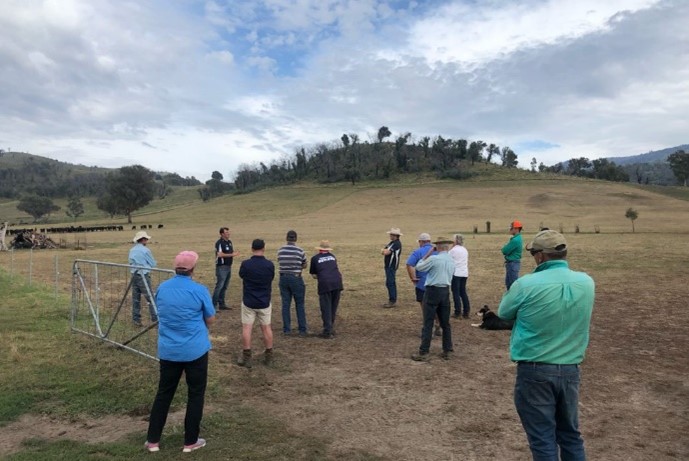 This producer demonstration site aims to evaluate weed control and pasture management to improve fire-affected areas. It is conducted in the Upper Murray and East Gippsland on properties that were burnt in the 2020 bushfires.
This producer demonstration site aims to evaluate weed control and pasture management to improve fire-affected areas. It is conducted in the Upper Murray and East Gippsland on properties that were burnt in the 2020 bushfires.
Resources and updates
Group name and coordinators
Weed Warriors
Upper Murray
Nick Linden
nick.linden@agriculture.vic.gov.au
East Gippsland
Keren Walker
This demonstration is funded by Meat & Livestock Australia
This producer demonstration site aims to increase the number of lambs weaned by 5–10% using a combination of improved scanning practices, joining length, mob size and other management practices to improve reproductive efficiency.
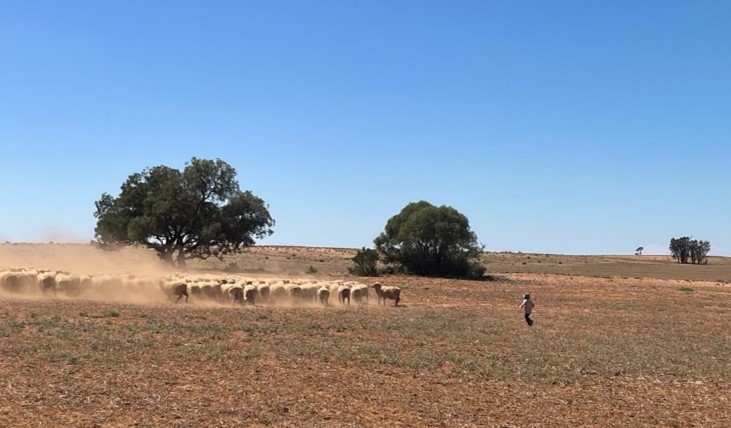
Resources and updates
Group name and coordinator
Northern Mallee Livestock Group
Erica Schelfhorst
erica.schelfhorst@agriculture.vic.gov.au
This demonstration is funded by Meat & Livestock Australia.
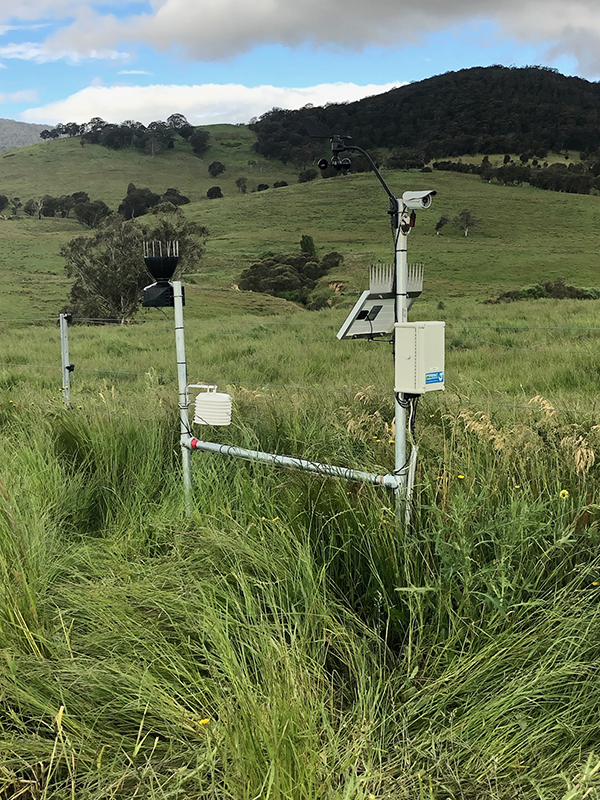 This producer demonstration site aims to promote soil probe data and its use for making early decisions on Gippsland grazing enterprises under a variable climate.
This producer demonstration site aims to promote soil probe data and its use for making early decisions on Gippsland grazing enterprises under a variable climate.
Group name and coordinator
James Paulet
james.paulet@agriculture.vic.gov.au
Completed demonstrations
Final reports and factsheets are included below for these recent demonstrations and are also available on the MLA website.
Feedbase
Demonstrating productivity benefits from meeting pasture production levels for twin bearing ewes by deferring grazing it in autumn until minimum feed on offer levels have been reached (1400kg DM/ha).
Demonstration summary:
Final report:
Group name and coordinator
Glenthompson – Dunkeld BWBL
Andrew Whale
M: 0428 374 046
Agriculture Victoria demonstration coordinator
Bindi Hunter, Warrnambool
P: 5561 9909
M: 0428 589 016
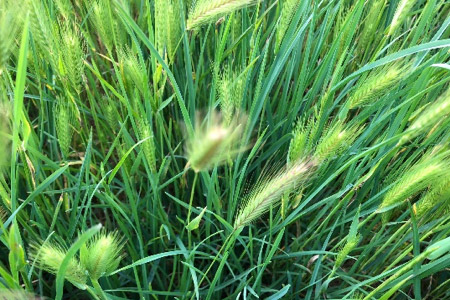 Demonstrating the impact of barley grass control strategies on dry matter production and pasture composition in perennial pastures.
Demonstrating the impact of barley grass control strategies on dry matter production and pasture composition in perennial pastures.
Resources and updates
Group and coordinators
Perennial pasture systems
Tess McDougall, Agriculture Victoria
M: 0409 841 492
Rob Shea, Perennial Pasture Systems
M: 0438 521 357
This demonstration was co-funded with Meat & Livestock Australia (MLA).
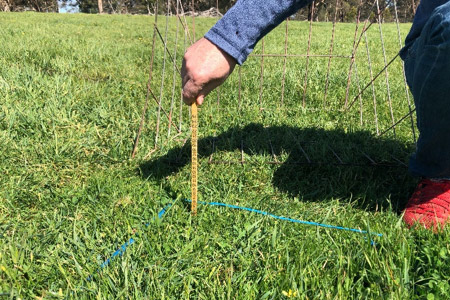 Investigating the use of soil moisture probes to predict late winter/spring pasture growth and options for using this information to improve feed management.
Investigating the use of soil moisture probes to predict late winter/spring pasture growth and options for using this information to improve feed management.
Resources and updates
Group and coordinator
Glenelg BestWool/BestLamb, Macarthur BetterBeef, Central Ranges Grassland Society of Southern Autstralia
Jane Court, Bendigo
M: 0436 606 742
This demonstration was co-funded with Meat & Livestock Australia (MLA).
Establishing best practice guidelines for gibberellic acid (GA) use in the Upper Wimmera and Central Victoria regions, and demonstrating the impact of GA as a non-chemical weed control measure.
Demonstration summary:
- Innovative use of Gibberellic Acid (PDF - 448.6 KB)
- Innovative use of Gibberellic Acid (WORD - 373.2 KB)
Final report:
- Innovative use of Gibberellic Acid (PDF - 3.2 MB)
- Innovative use of Gibberellic Acid (WORD - 4.5 MB)
Group name and coordinator
Perennial Pasture Systems
Rob Shea
M: 0438 521 357
Agriculture Victoria demonstration coordinator
Rachael Campbell, Ballarat
P: 5336 6868
M: 0447 347 162
Demonstrating the benefits to the grazing system from sowing an oat crop into an existing phalaris pasture and grazing in winter.
Demonstration summary:
- Pasture cropping to fill the winter feed gap (PDF - 829.3 KB)
- Pasture cropping to fill the winter feed gap (WORD - 705.3 KB)
Final report:
- Pasture cropping to fill the winter feed gap (PDF - 2.2 MB)
- Pasture cropping to fill the winter feed gap (WORD - 14.1 MB)
Group name and coordinator
Glenelg BWBL
Tim Leeming
M: 0427 797 242
Agriculture Victoria demonstration coordinator
Bindi Hunter, Warrnambool
P: 5561 9909
M: 0428 589 016
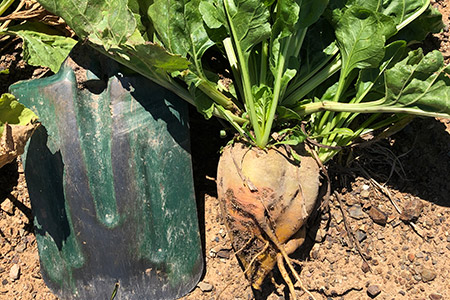 Resources and updates
Resources and updates
- Project findings
- Fodder beet – the lure of potential (PDF - 225.1 KB)
- Fodder beet – the lure of potential (WORD - 489.7 KB)
Group name and coordinator
Upper Murray and Murmungee BetterBeef groups
Nick Linden, Rutherglen (Agriculture Victoria)
M: 0438 369 486
Chris Mirams
M: 0409 205 235
This demonstration was co-funded with Meat & Livestock Australia (MLA).
Sheep
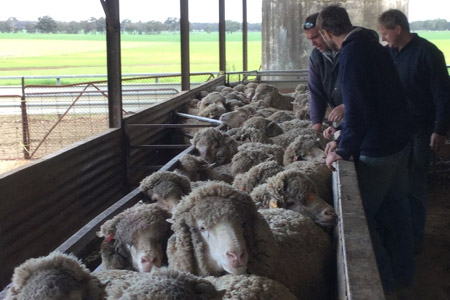 Demonstrating the benefits of weaning lambs compared to selling unweaned suckers for Wimmera mixed cropping/livestock properties.
Demonstrating the benefits of weaning lambs compared to selling unweaned suckers for Wimmera mixed cropping/livestock properties.
Resources and updates:
July 2021 update
- To wean or not to wean – July 2021 Update (PDF - 312.0 KB)
- To wean or not to wean – July 2021 Update (WORD - 273.7 KB)
April 2020 update
Group and coordinators
St Arnaud BestWool/BestLamb
Steve Cotton
M: 0447 352 321
Rachel Coombes, Agriculture Victoria
M: 0436 001 258
This demonstration was co-funded with Meat & Livestock Australia (MLA).
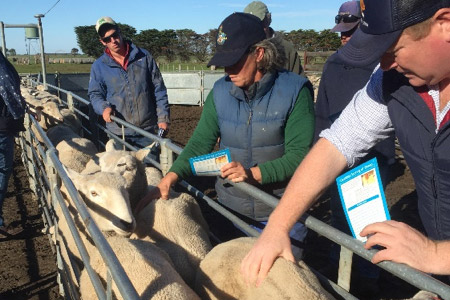 Demonstrating increased lamb survival by following the Lifting Lamb Survival Paddock Planning and National Lambing Density Protocols.
Demonstrating increased lamb survival by following the Lifting Lamb Survival Paddock Planning and National Lambing Density Protocols.
Measuring the benefits from paddock size, mob size, stocking rate, ewe condition score and improved shelter.
Resources and updates:
- Project findings
- BWBL Western Plains – Lamb survival management strategies – Feb 2021 Update (PDF - 536.8 KB)
- BWBL Western Plains – Lamb survival management strategies – Feb 2021 Update (WORD - 1.0 MB)
Group name and coordinator
Western Plains BestWool/BestLamb
Andrew Kennedy
M: 0408 512 240
Cathy Mulligan
This demonstration was co-funded with Meat & Livestock Australia (MLA).
 Demonstrating and measuring on farm use of a drone to check sheep welfare at lambing and comparing the level of disturbance from a drone to normal practise.
Demonstrating and measuring on farm use of a drone to check sheep welfare at lambing and comparing the level of disturbance from a drone to normal practise.
Identifying uses for drones at other times of the year, such as checking water troughs in summer.
Resources and updates
- Project findings
- Drones for monitoring sheep welfare at lambing
- View the drone in action
- Boort BestWool/BestLamb: Using drones on-farm to monitor sheep welfare 2022 (PDF - 366.7 KB)
- Boort BestWool/BestLamb: Using drones on-farm to monitor sheep welfare 2022 (WORD - 423.0 KB)
- Drones for monitoring sheep- July 2020 Update (PDF - 554.6 KB)
- Drones for monitoring sheep- July 2020 Update (WORD - 1.2 MB)
- Farmers add drone pilot to skill set
- Sheep welfare monitored by drones – video
Group name and coordinator
Boort BestWool/BestLamb
Erica Schelfhorst
M: 0429 807 689
This demonstration was co-funded with Meat & Livestock Australia (MLA).
Use of creep feeding for lambs pre-weaning to improve growth rate and turnoff times.
Case study:
- Finishing systems for growing lambs (PDF - 466.1 KB)
- Finishing systems for growing lambs (WORD - 507.6 KB)
Final report:
- Finishing systems for growing lambs (PDF - 2.0 MB)
- Finishing systems for growing lambs (WORD - 1.9 MB)
Group name and coordinator
Bullioh BWBL
Kristy Howard
M: 0400 282 222
Agriculture Victoria demonstration coordinator
Gervaise Gaunt, Rutherglen
P: 02 6030 4571
M: 0409 027 115
Validating and demonstrating the impact of grazing lucerne (and other green feeds) at joining on conception and comparing this with the impacts of feeding lupins or joining on dry standing feed.
The project also investigated the impact of grazing Lucerne on early embryo mortality.
Final report:
Group name and coordinator
Individual co-operators (statewide)
Agriculture Victoria demonstration coordinator
Gervaise Gaunt, Rutherglen
P: 02 6030 4571
M: 0409 027 115
Demonstrating the economic, social and environmental benefits of increased shelter for lamb survival through the establishment of hedgerows of Tall Wheat Grass, leguminous shrubs, straw bales and shade cloth.
Demonstration summary:
- Shelter options for increased lamb survival (PDF - 1.1 MB)
- Shelter options for increased lamb survival (WORD - 650.8 KB)
Final report:
- Shelter options for increased lamb survival (PDF - 4.7 MB)
- Shelter options for increased lamb survival (WORD - 7.9 MB)
Group name and coordinator
Casterton, Cavendish and Avoca BWBL
Andrew Speirs
M: 0428 685 172
Agriculture Victoria demonstration coordinator
Grace Calder, Ballarat
P: 5336 6628
M: 0429 523 317
Improving production by combining rotational grazing technologies, current and emerging varieties of fodder crops and the best available sheep genetics.
Final report:
- Grazing management for improved reproduction and reduced turnoff times (PDF - 2.3 MB)
- Grazing management for improved reproduction and reduced turnoff times (WORD - 3.3 MB)
Group name and coordinator
Rich River BWBL
Kristy Howard
M: 0400 282 222
Agriculture Victoria demonstration coordinator
Garry Armstrong, Echuca
P: 5430 4716
M: 0472 871 674
Beef
Demonstrating the impact of enhanced training techniques at weaning and induction on cattle performance.
Demonstration fact sheet:
- Weaning strategies for improved productivity (PDF - 323.9 KB)
- Weaning strategies for improved productivity (WORD - 235.7 KB)
Final report:
- Weaning strategies for improved productivity (PDF - 1.5 MB)
- Weaning strategies for improved productivity (WORD - 1.4 MB)
Group name and coordinator
South Gippsland farmers
Clare Harris
Demonstrating the use of PMM technology within a commercial beef enterprise to establish maternal pedigree and enable identification and selection of superior breeders.
Demonstration fact sheet:
- Matching cows and their calves using Pedigree MatchMaker (PDF - 319.6 KB)
- Matching cows and their calves using Pedigree MatchMaker (WORD - 225.5 KB)
Final report:
- Matching cows and their calves using Pedigree MatchMaker (PDF - 6.2 MB)
- Matching cows and their calves using Pedigree MatchMaker (WORD - 11.7 MB)
Group name and coordinator
Colac BWBL
Nathan Scott
M: 0409 493 346
Agriculture Victoria demonstration coordinator
Chris Blore, Hamilton
P: 5573 0720
M: 0428 155 781
Other innovations
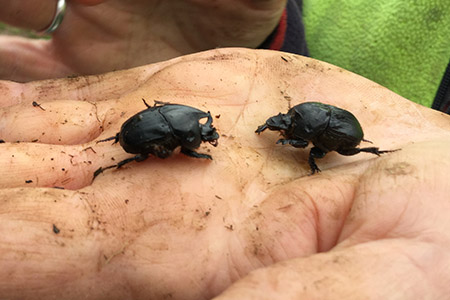 Investigating the presence of dung beetles in southwest Victoria and demonstrating their benefits to prime lamb operations.
Investigating the presence of dung beetles in southwest Victoria and demonstrating their benefits to prime lamb operations.
Resources and updates:
- Project findings
- Case study: Cashmore Park
- These dung beetles were trapped on South West Prime Lamb Group (SWPLG) farms with assistance from the Dung Beetle Ecosystem Engineers (DBEE) project:
- – Aphodius fimetarius – introduced
- – Bubas bison – introduced
- – Euoniticellus fulvus – introduced
- – Euoniticellus pallipes – introduced
- – Geotrupes spiniger – introduced
- – Onitis aygulus – introduced
- – Onthophagus australis – native
- – Onthophagus binodis – introduced
- – Onthophagus mnisznechi – native
- – Onthophagus posticus – native
- – Onthophagus taurus – introduced
- This short (3 min) video explains how to find dung beetles on your property.
- Meet the dung beetles on South West Prime Lamb Group (SWPLG) farms (WORD - 128.8 KB)
Group name and coordinator
SW Prime Lamb Group (BestWool/BestLamb)
Kate Joseph
M: 0428 541 158
Bindi Hunter, Warrnambool
M: 0428 589 016
This demonstration was co-funded with Meat & Livestock Australia (MLA).
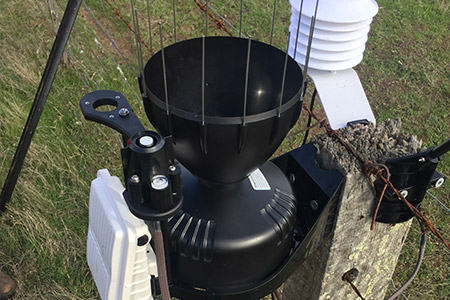 Demonstrating and evaluating the use of new, commercially available sensor-based technologies for monitoring:
Demonstrating and evaluating the use of new, commercially available sensor-based technologies for monitoring:
- electric fencing
- soil moisture
- livestock
- weather
- tanks.
Resources: AgTech Bytes
- AgTech Bytes 1: Long Range Wide Area Network (LoRaWAN)
- AgTech Bytes 2: Electric fence monitor
- AgTech Bytes 3: Dashboard
- AgTech Bytes 4: Mobile networks
- AgTech Bytes glossary (WORD - 1.3 MB)
- AgTech Bytes glossary (PDF - 664.8 KB)
Case study: AgTech
Group name and coordinator
GSSA Pasture Tech Group
Jonathan Jenkin
M: 0456 853 535
Agriculture Victoria demonstration coordinator
Chris Blore, Hamilton
M: 0428 155 781
Why conduct on-farm demonstrations?
Agriculture Victoria and Meat & Livestock Australia (MLA) offer this program in response to strong interest from producers in hosting or supporting on-farm demonstrations within their group. Local demonstration sites can provide a focus for groups that will explore solutions to common on-farm challenges. The learning arising from these demonstrations will help group members to improve the profitability and resilience of their farming businesses.
Previous experience shows that the process of identifying the key on-farm challenges, developing solutions and trialling them in a local group environment gives producers ownership over the outcomes and increased confidence to make the changes that will enhance their livestock businesses.
More information
To find out more, please contact:
Bindi Hunter
Project Leader Farming Systems Demonstration
E: bindi.hunter@agriculture.vic.gov.au
